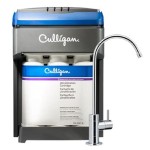How To Fix A Crack In A Sink
A cracked sink, whether it's porcelain, acrylic, or composite, is more than just an aesthetic problem. It can lead to water damage, mold growth, and ultimately, a costly sink replacement. Understanding the nature of the crack, selecting the appropriate repair method, and executing the repair with precision are crucial steps to restore the sink's functionality and appearance. This article provides a comprehensive guide to diagnosing the crack, gathering the necessary materials, and performing a successful repair.
Assessing the Damage and Determining the Type of Sink
Before embarking on any repair, a thorough assessment of the crack is paramount. The depth, length, and location of the crack will influence the best course of action. A hairline fracture might be addressed with a simple surface sealant, while a more substantial crack requires a more involved approach, potentially involving structural reinforcement.
Identifying the material of the sink is equally important. Porcelain sinks, known for their durability and classic appearance, are susceptible to chipping and cracking due to impact. Acrylic sinks, lightweight and more resistant to impact, can also develop cracks over time, especially with exposure to extreme temperatures or harsh chemicals. Composite sinks, made from a blend of materials such as quartz or granite dust and resin, are relatively durable but can still crack under stress.
Different sink materials require different repair products. Using the wrong type of sealant or epoxy could result in a failed repair, further damage to the sink, or an aesthetically displeasing outcome. Carefully inspect the sink and, if possible, consult the manufacturer's documentation to determine the exact material composition. If unsure, testing a small, inconspicuous area with various cleaning agents or repair substances can help determine the material's reaction and compatibility.
Once the type of sink and the severity of the damage are assessed, one can determine if a DIY repair is feasible. If the crack is extensive, deep, or located in a structurally critical area (such as near the drain), professional assistance should be considered. Attempting a complex repair without the necessary skills or experience could worsen the problem and lead to the need for a full sink replacement.
Gathering the Necessary Materials and Tools
The success of a sink crack repair hinges on using the right materials and tools. A well-equipped workspace will streamline the process and minimize the risk of errors.
For hairline cracks, a porcelain repair kit or epoxy specifically designed for the sink material is often sufficient. These kits typically include a color-matched filler, a hardener, and application tools. For larger cracks, a two-part epoxy resin is generally recommended. This epoxy provides a stronger bond and can fill wider gaps. It is crucial to select an epoxy that is specifically formulated for the sink material and is resistant to water and chemicals.
In addition to the repair compound, several other essential materials are needed. Rubbing alcohol or acetone will be used to clean the damaged area, ensuring proper adhesion of the repair compound. Sandpaper, ranging from fine-grit (400-grit) to medium-grit (220-grit), will be used to prepare the surface and blend the repair with the surrounding area. Masking tape will protect the surrounding sink surface from accidental spills or scratches during the repair process. A plastic spreader or putty knife will be used to apply the repair compound evenly and smoothly. A clean, lint-free cloth will be used for cleaning and wiping away excess material.
Safety gear is also essential. Wearing gloves will protect the hands from chemicals and adhesives. Eye protection, such as safety glasses, will prevent splashes or debris from entering the eyes. A well-ventilated area is crucial, especially when working with epoxy resins, which can emit fumes. If ventilation is limited, a respirator or mask should be worn.
Finally, consider a color-matching kit. Even if the repair kit is labeled as the same color as the sink, slight variations can occur. Color-matching kits allow for fine-tuning the color of the repair compound to seamlessly blend with the surrounding surface.
Step-by-Step Repair Procedure
The repair process involves careful preparation, precise application of the repair compound, and meticulous finishing. Following these steps diligently will maximize the chances of a successful and long-lasting repair.
The first step is surface preparation. Thoroughly clean the area around the crack with rubbing alcohol or acetone to remove any dirt, grease, or soap residue. Use the medium-grit sandpaper to gently roughen the surface around the crack. This will create a better bonding surface for the repair compound. Be careful not to scratch the surrounding area excessively. After sanding, wipe away any dust with a clean cloth. Apply masking tape around the crack to protect the surrounding sink surface from accidental spills or scratches.
Next, prepare the repair compound according to the manufacturer's instructions. This typically involves mixing two components together in a specific ratio. Ensure the mixture is thoroughly combined to achieve the desired consistency and hardening properties. For hairline cracks, apply the filler directly into the crack using a small brush or applicator included in the repair kit. For larger cracks, use a plastic spreader or putty knife to apply the epoxy resin evenly into the crack, ensuring it fills the entire gap. Overfill the crack slightly to allow for sanding later.
Allow the repair compound to cure completely according to the manufacturer's instructions. This can take anywhere from a few hours to 24 hours or more, depending on the type of compound used. Avoid touching or disturbing the repaired area during the curing process.
Once the repair compound is fully cured, begin the finishing process. Use the medium-grit sandpaper to carefully sand down the excess repair compound, blending it smoothly with the surrounding sink surface. Switch to the fine-grit sandpaper to further refine the surface and remove any remaining imperfections. Be careful not to sand too aggressively, as this could damage the surrounding sink surface. After sanding, wipe away any dust with a clean cloth. If necessary, use a polishing compound or glaze to restore the shine to the repaired area.
Finally, remove the masking tape and inspect the repair. If any imperfections are visible, repeat the sanding and polishing process until a smooth, seamless finish is achieved. Clean the entire sink thoroughly to remove any remaining residue.
After completing the repair, it is crucial to allow the repaired area to fully cure and harden before exposing it to water or harsh chemicals. Consult the manufacturer's instructions for the specific curing time recommended for the repair compound used.
Preventative Measures and Maintenance
While a successful repair can restore the sink's functionality and appearance, preventative measures and proper maintenance are crucial to prevent future cracking and prolong the life of the sink.
Avoid dropping heavy objects into the sink, as this is a common cause of cracks, especially in porcelain sinks. Use a sink mat or protector to cushion the impact of falling objects. Be cautious when handling pots, pans, and other heavy items near the sink.
Avoid exposing the sink to extreme temperature changes. Pouring boiling water directly into a cold sink can cause thermal shock, leading to cracks. Allow the sink to warm up gradually before pouring hot liquids into it. Similarly, avoid placing ice-cold items in a hot sink abruptly.
Use non-abrasive cleaning products specifically designed for the sink material. Harsh chemicals and abrasive cleaners can damage the surface and weaken the material, making it more susceptible to cracking. Follow the manufacturer's instructions for cleaning and maintenance.
Repair small chips and cracks promptly to prevent them from spreading. Early intervention can often prevent a minor issue from escalating into a major problem. Regularly inspect the sink for any signs of damage and address them as soon as possible.
Consider applying a sealant or protective coating to the sink surface to provide an extra layer of protection against scratches, stains, and cracks. These coatings can help to extend the life of the sink and maintain its appearance.
By implementing these preventative measures and practicing proper maintenance, one can significantly reduce the risk of future sink cracks and ensure the longevity of the sink.

How To Fix A Crack In Porcelain Sink Youtube

How To Fix A Cracked Porcelain Sink Hometalk

How To Patch A Porcelain Sink Crack Himg Surface Repair

How To Fix A Ceramic Or Porcelain Sink 6 Simple Diy Steps

How To Repair A Cracked Sink Foreman Snags

How To Repair A Cracked Ceramic Bathroom Basin George

I Have A Huge Crack In My Porcelain Sink What S The Best Way To Fix Hometalk

How To Fix A Cracked Porcelain Sink 8 Steps Prudent Reviews

How To Fix A Hairline Crack In The Vanit Bunnings Work Community

How To Fix A Chipped Porcelain Sink







